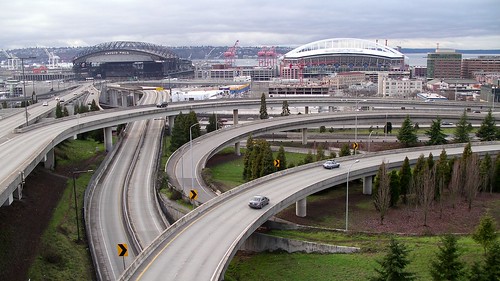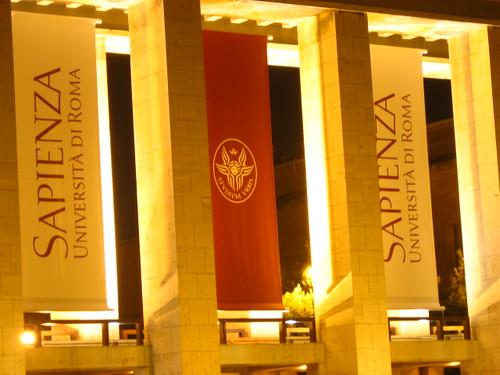The Road Worrier: A Time To Stimulate, And A Time To Innovate
(Source: Glenn Havinoviski, Columnist @ ITS Virginia)
Glenn N. Havinoviski is an Associate Vice President and ITS Group Director for HNTB Corporation in Arlington, Virginia. In his recent column on ITS Virginia’s quarterly Newsletter, Glenn discussed his views on the stimulus funding towards transportation projects and their impact on ITS, jobs, etc. Here is an excerpt from the PDF version attached here.
You gotta hand it to the new President. In less than four weeks,he got his way, running roughshod over a political opposition unableto develop or convince others of their own vision and ideas. Uncle”O” signed into law a $785 billion stimulus, an ode to the power ofhope, change and the ability to print lots of money. In Virginia alone,some $700 million will be provided for “shovel-ready” transportationprojects, to be selected in the next few weeks by state officials.Among those projects will be several initiatives related to trafficmanagement, operations and ITS. While the purpose of the stimulusis first and foremost the creation of new jobs, closer to home I knowit may preserve some existing jobs.While I believe this example of Federal largesse will end upbeing more a historical exception rather than the rule, we’ve alreadythrown a like amount at the banks and the struggling auto industry,courtesy of Mr. Obama’s wayward predecessor.So far, it is unclear what that money has gotten us. Banks stillwon’t make loans, GM still can’t sell cars, and too many bank executivesare still partying in Vegas and elsewhere. The toxic assets arestill toxic, and still dwindling in value, seemingly by the hour.
With the horrendous transportation funding cut-backs at thestate level and limited support from elected officials, VDOT hasbeen forced to create an austere vision, one which emphasizesoperating what we have, as opposed to ramrodding a programcontaining projects which in many cases have been deferred acrossseveral lifetimes. The new-look Federal government may be seekingto bankroll a future transit and clean-energy vehicle utopia. But Virginia, as with many other states, has been economically forcedto be more pragmatic with their own money and make very hardbut practical choices.
With all the excitement over a suddenly activist Federal government,what is in danger of getting lost in the mix has been theprogress made in the last decade toward innovative use of resources- including partnerships to leverage both government and privateinvestment, using tolling and road pricing both as revenue streamand as demand management tool, and development of a networkof vehicle-roadside communications for both safety and mobilityapplications.Such approaches to transportation improvements heavily dependon collection and monitoring of real-time information, alongwith electronic payment services and dedicated short-range communications(DSRC). They also create new opportunities for jobs,as well as new markets for information and technology services.No question that they could benefit from, but are not completelydependent on, the largesse of the young handsome Uncle “O” anda largely (but not completely) sympathetic Congress. “








 “The paradigm shift goes from a car receiving information only to a car communicating bi-directionally with its environment. The car will become an open system and the car industry will see a change in much the same way that mainframe computer vendors and incumbent telecom operators saw their world change within a decade. We invite all the bright minds to create the best solution and to test them in an open challenge. Who will become the Microsoft of the car operating system? It will take decades, five system generations of evolution, but the automobile will become a real auto (auto) mobile.”
“The paradigm shift goes from a car receiving information only to a car communicating bi-directionally with its environment. The car will become an open system and the car industry will see a change in much the same way that mainframe computer vendors and incumbent telecom operators saw their world change within a decade. We invite all the bright minds to create the best solution and to test them in an open challenge. Who will become the Microsoft of the car operating system? It will take decades, five system generations of evolution, but the automobile will become a real auto (auto) mobile.”